Lean Product Development
People sometimes tell me they’re having trouble getting their company interested in applying Lean and Agile concepts to hardware product development projects. That's unfortunate because Lean Product Development is the biggest business opportunity we’ve seen in decades. Literally. And here’s a simple way to prove it. (Be sure to check out the case study at the end.)
Speed to market is the biggest opportunity to increase profit
Almost ten years ago, Stephen R. Covey said in his son's book, Stephen M.R. Covey's, The Speed of Trust, “My interactions with business leaders around the world have made it increasingly evident that ‘speed to market’ is now the ultimate competitive weapon.”
This quote even made the cover of Business Week magazine.
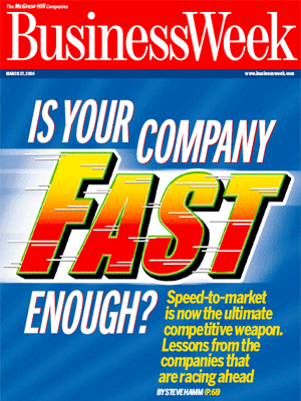
We also know from the Cost of Delay model that being late to market is usually the biggest cost (or lost profit opportunity) in a project.
So with the importance of speed in mind, let’s look at previous initiatives in manufacturing and what they did for us...
Previous initiatives in Lean manufacturing focused on cost cutting
Most of these initiatives have three letter acronyms (or TLAs) that we’re all familiar with.
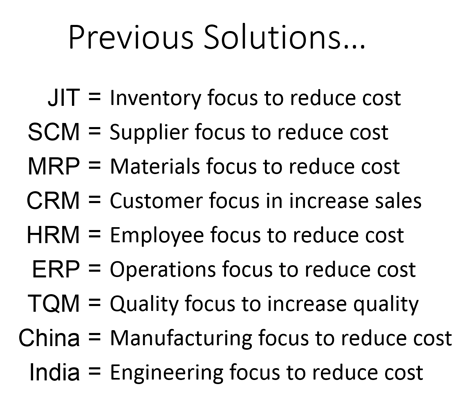
If you look carefully, you’ll notice that almost all of them focused on reducing cost.
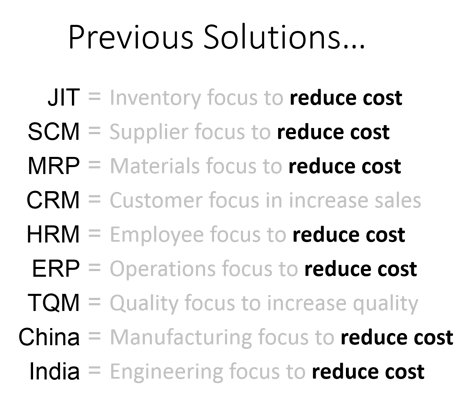
That’s fine. Reducing cost increases profit. (At least initially, but that’s another story…) But is reducing cost really the best, or only place to focus? Aren’t most manufacturers in the business of increasing value? That’s certainly the expectation placed on most CEOs.
Increasing revenue in Lean product development should be the goal
Fortunately, there is another option. We can see in the model below the two primary ways to increase value is to either increase revenue, or decrease expenses. And each of those has multiple drivers.
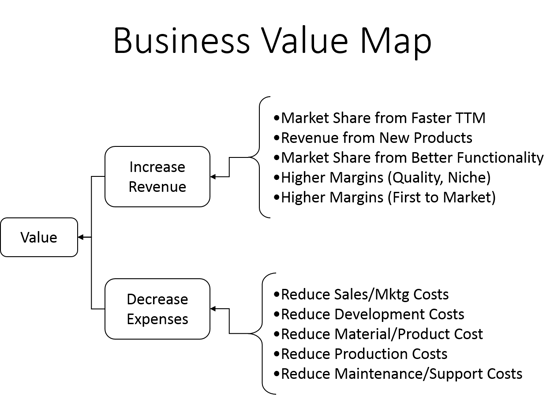
So all of our previous initiatives that focused on reducing costs looked like this.
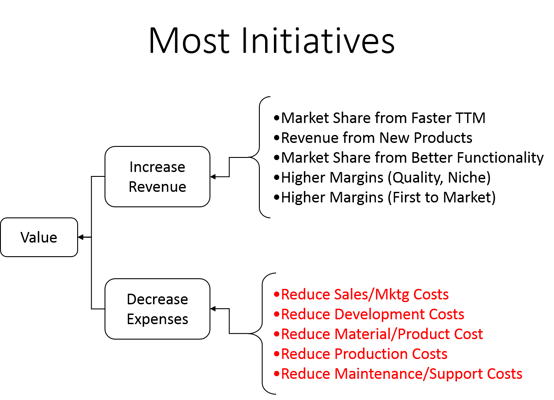
But Lean Product Development is almost completely focused on increasing revenue.
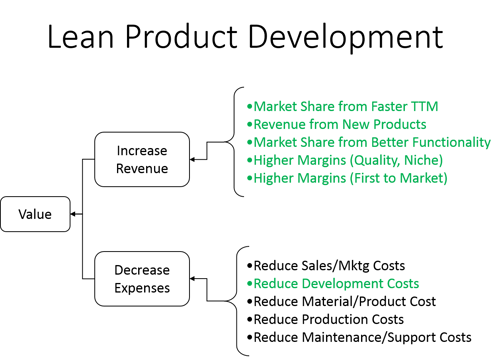
There's clearly a difference, but is it big? Isn’t a dollar saved worth more than a dollar earned? Maybe, but look at the limits of the two options.
Increasing revenue with Lean Product Development
Cutting costs, especially with suppliers, is usually a zero sum game. In order for you to win, they have to lose. And there’s an eventual limit—costs can’t go to zero. But increasing revenue is a win-win game. You and your supply chain both benefit. And there’s theoretically no limit to how much you can increase revenues.
So, now that we see that Lean PD—because of its impact on speed—mainly focuses on increasing revenue, we can see how it compares to all of those previous initiatives.
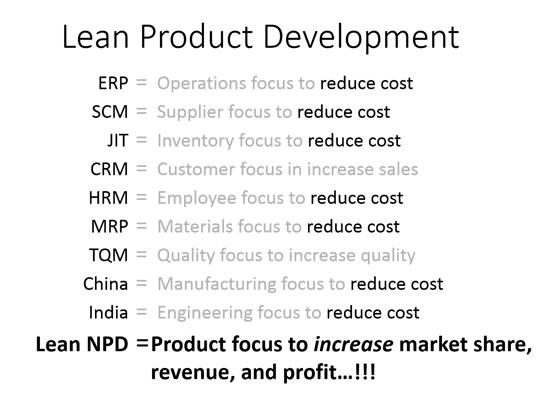
Notice the difference? It’s big.
The financial impact of adopting Lean product development speaks for itself
The language of management is money. So the next time someone says they don’t have time to look into Lean or Agile product development, show them this and let us help you calculate your Cost of Delay. That should give them a new filter through which to consider their options.
In fact, we believe there’s no need to “sell” lean. The positive financial impact should speak for itself.
BTW, you might notice I didn’t mention “reducing waste” in this post. There’s a good reason for that so I’ll discuss it in a future topic. I’ll also explain other ways you can justify why it’s time to give R&D the attention it deserves.
In Part 3, I want to share an incredible case study that demonstrates the unexpected results that can be achieved when you apply the proper set of Lean Product Development principles.
In the meantime, watch this webinar hosted by Management Roundtable where one of our customers shares the steps they took to cut seven months off their schedule and net $15M additional profit by getting to their trade show a year early.
Related articles
Guide to Lean Project Management
Guide to Lean Product Development
Science and economics behind “failing fast”
Lean Product Development the Opportunity of the Century.
Lean Product Development Case Study
Principles of Lean Product Development
Lean Product Development Value Chain
Get started with Lean Product Development
Lean Product Development: Cultural Resistance
4 ways to Ensure Your Lean product Development Initiative Won't Fail



